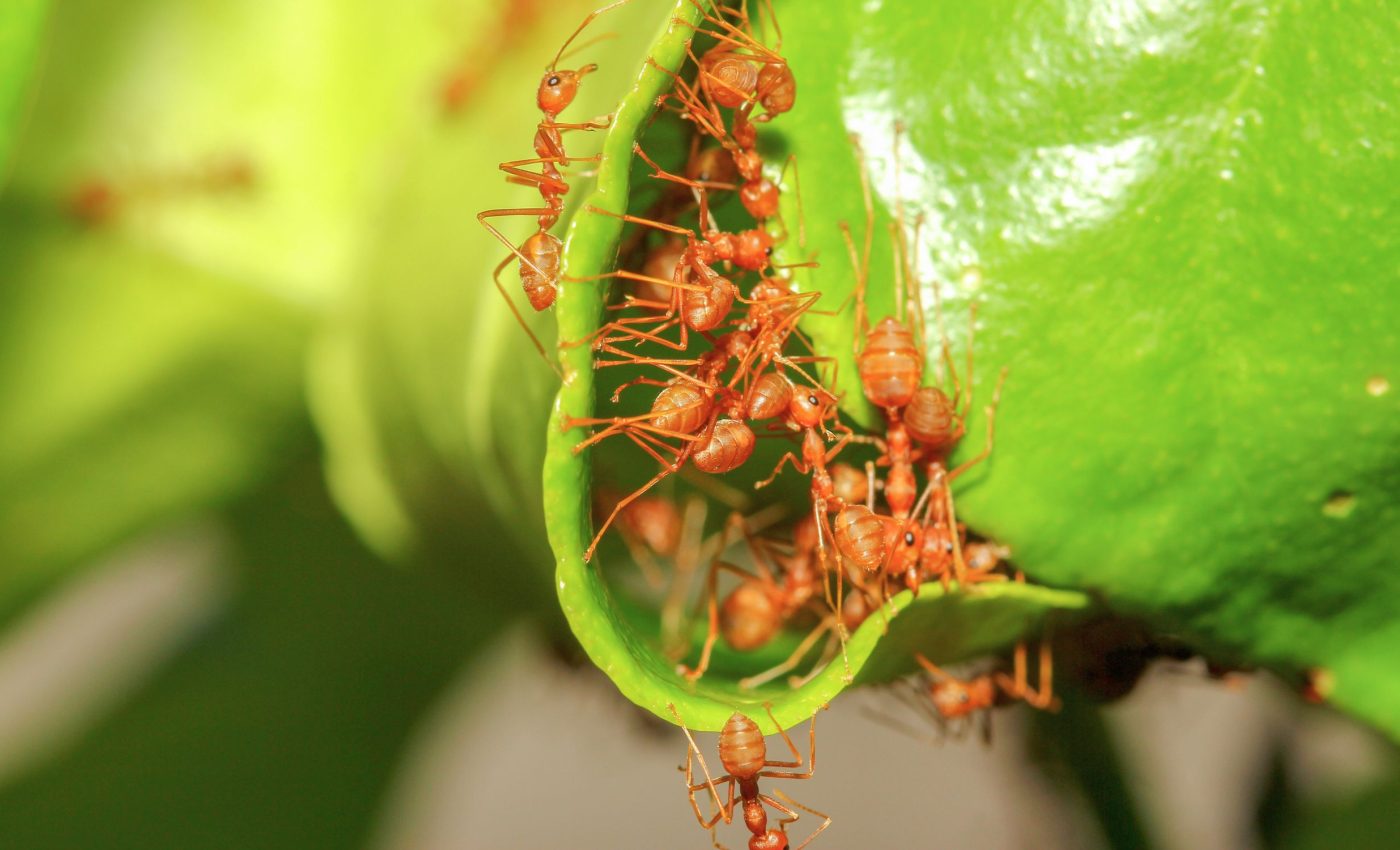
Just a few ants can change an entire colony's social structure
In social animal groups, decisions often emerge without a leader. A tiny minority can influence a much larger group. Fire ants do this too. They show how a small subset of workers can reshape an entire colony’s structure.
Haolin Zeng, a postdoctoral researcher at the University of Georgia (UGA), decided to study this power of the few. His findings appear in the Proceedings of the National Academy of Sciences.
Zeng and his team uncovered how a minority of ants carrying a genetic variant can flip a colony’s structure from single-queen to multiple-queen.
Power driven by genetics
Fire ant colonies come in two flavors: single-queen and multiple-queen. The difference is genetic.
Single-queen colonies reject any other queen. They protect their reigning monarch with fierce loyalty. New queens are unwelcome. The workers will kill them.
Multiple-queen colonies? Different story. They carry a genetic variant that makes them open to sharing power. These ants nurture additional queens, allowing multiple monarchs to coexist. This social setup stems from a specific gene.
Social order of the ant colony
Zeng wanted to know if a small group of multiple-queen workers could sway a single-queen colony. The answer? Yes.
“When a certain portion of the workers carry this gene, somehow the colony switches to behave as a multiple-queen colony. The workers will happily accept any additional queen, but only ones that carry this genetic element,” Zeng said.
Surprisingly, only 10% of the colony needs to carry this gene for the shift to occur. That’s a tiny fraction of the population. Yet, it’s enough to nudge the entire colony toward a new social order.
The ant introduction process
You can’t just throw these two groups of ants together. Chaos would erupt. Zeng’s team had to be careful.
First, they introduced 300 single-queen ants and 100 multiple-queen ants through a fine mesh barrier. The mesh allowed them to sense each other’s presence without direct contact. This acclimation period lasted a full day.
Why the mesh? Without it, the ants would have fought immediately. The gradual introduction prevented lethal combat.
Social change in ant colonies
For over 100 hours, researchers watched the ants interact. Would the genetic minority assert its influence? Yes. Slowly, the multiple-queen workers began altering the behavior of their single-queen counterparts.
Workers that once rejected additional queens started accepting them. But not just any queen. They only embraced queens carrying the genetic element. The minority had spoken, and the majority listened.
Pheromones as invisible messengers
Could the ants be using chemical signals to send messages? Zeng wanted to find out.
The researchers introduced dead multiple-queen ants to the single-queen colony. Some corpses were washed clean of pheromones. Others remained unwashed.
The reaction? The ants responded to the unwashed corpses, suggesting that chemical signals were at play.
To confirm this, the team coated glass beads in pheromones and placed them in the colony. The ants reacted just as they did to the live workers, proving the power of these invisible messages.
Genes, pheromones, and social order
Zeng’s findings highlight a fascinating dynamic: genetic traits can ripple through a group without direct contact. Pheromones bridge the gap.
“The idea that behavior is impacted not only by your own genes, but by the genes of nestmates or the folks you interact with is important,” Zeng said.
This kind of indirect genetic effect isn’t unique to ants. Social mammals, birds, and even fish display similar dynamics. One individual’s genetic makeup can subtly alter the behavior of others around them.
From crops to ants
Zeng didn’t start with ants. He began his academic journey studying crop sciences at the University of Illinois Urbana-Champaign. Then, in 2016, he switched gears and joined the entomology department at the University of Georgia.
“When I started to study insects, I asked, what are the most interesting system insects to study, ecologically and evolutionarily? That’s got to be social insects. They are everywhere and super successful. There are so many questions to ask and behaviors yet to understand,” he said.
Now, as a postdoc at UGA’s Odum School of Ecology, Zeng continues his fire ant research, digging deeper into how small groups can change entire colonies.
Social influence beyond ant colonies
Zeng’s study carries implications beyond ants. It suggests that even in seemingly rigid social structures, a small minority can exert a profound influence. Understanding this dynamic could reshape how we view social power, not just in ants but in all animal societies.
The study’s co-authors include Kenneth G. Ross of the UGA CAES Department of Entomology and Takao Sasaki from the University of Rochester.
The paper, titled “Conversion of social organization in fire ants induced by few colony members: unmasking indirect genetic effects,” serves as a reminder that sometimes, the few can change the many.
The study is published in the journal Proceedings of the National Academy of Sciences.
—–
Like what you read? Subscribe to our newsletter for engaging articles, exclusive content, and the latest updates.
Check us out on EarthSnap, a free app brought to you by Eric Ralls and Earth.com.
—–













